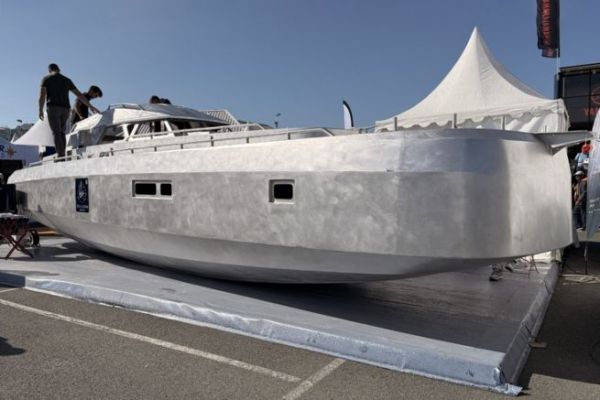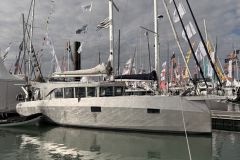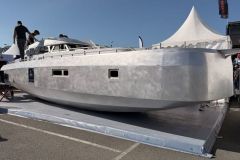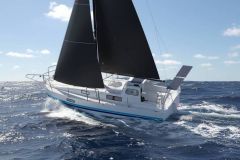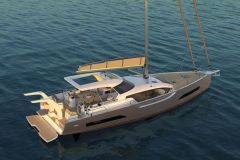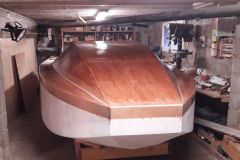At the Grand Pavois boat show in La Rochelle in September 2025, one yacht caught the eye: the Sea Scow 33. Presented without keel, fittings or interior fittings, this 10-meter sailboat is presented as a raw base. An unusual configuration for a boat show, it raises a number of technical issues, as well as opportunities for interpretation and outfitting.
A keel-less, interior-less sailboat: prototype or design platform?
Displayed in its most stripped-down version, the Sea Scow 33 featured an aluminum deck hull with no ballast or appendages. This deliberate absence (given the timing) means it can be seen as a modular platform for shipyards or owners wishing to adapt the design to their program.
The current configuration is therefore aimed at professionals as well as discerning individuals interested in a yacht that can be customized in depth. The absence of a keel also means it can be transported by road and finished off at a later date. For the time being, this is mainly hull number 1, designed and built by an owner eager to set off for the high latitudes.
Aluminum construction for an offshore program
The hull is built by the Bord à Bord shipyard, based in Brittany and specializing in marine sheet metal work. The choice of aluminum, although classic in ocean-going programs, requires manufacturing and welding expertise that few shipyards have.
The advantage remains the material's robustness, ease of repair at port and durability, even in extreme environments. The hull of the Sea Scow 33, rated at 2.5 tons of bare aluminum, is oversized to handle the loads and stresses of offshore sailing. It remains to be seen whether this extra weight (in comparison with sandwich hulls) will penalize the performance of this Scow hull, whose lightness is a byword for smooth operation.
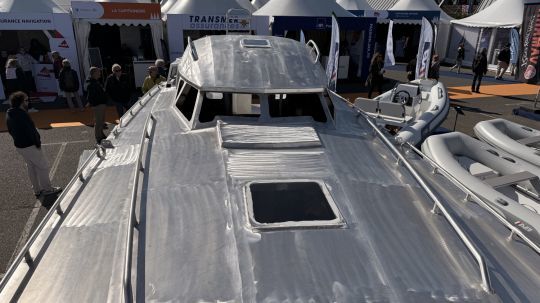
A weight estimate for a category A program
The shipyard quotes a total weight of 7.1 tons, including the 1.3 ton keel. This ratio suggests a favorable weight/volume ratio for a wide hull inspired by modern scows. This configuration, coupled with all-aluminium construction, is aimed at an offshore sailing program, with Category A certification for 6 people.
The dimensions and structure suggest a stable sailboat, comfortable in rough seas and capable of carrying autonomous loads, even if its efficiency in certain points of sail remains to be assessed once the final version is launched.
Propulsion: a well-sized combustion engine
In terms of propulsion, the planned model is equipped with a Yanmar engine, a 40 hp diesel sufficient to maneuver a sailboat of this displacement. This classic motorization ensures easy maintenance and availability of parts on major sailing routes. In terms of price, the bare hull with deck is offered at ?138,000 plus VAT, to which can be added the engine (?15,200 plus VAT).
A unit in the making, between architecture and personalization
Designed by naval architect Gildas Plessis, in collaboration with Patrick Fontaine, the Sea Scow 33 embodies an exciting modular approach. The unit is currently under construction, giving owners a great deal of freedom in terms of layout, fittings and final program. The fully-equipped version of model number 1 should enable us to better appreciate the performance and sailing philosophy of this atypical yacht, which joins the growing range of cruising cows.

 /
/ 